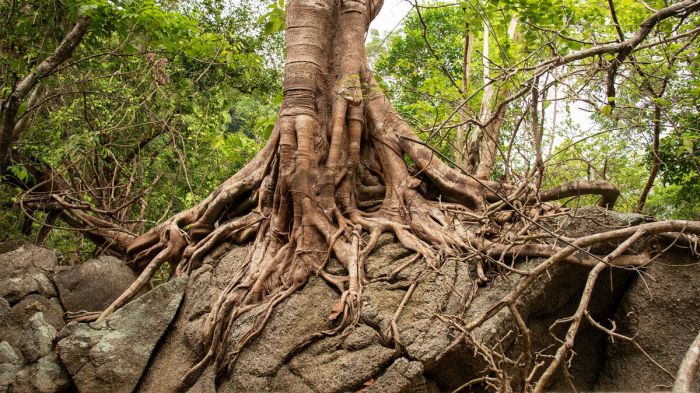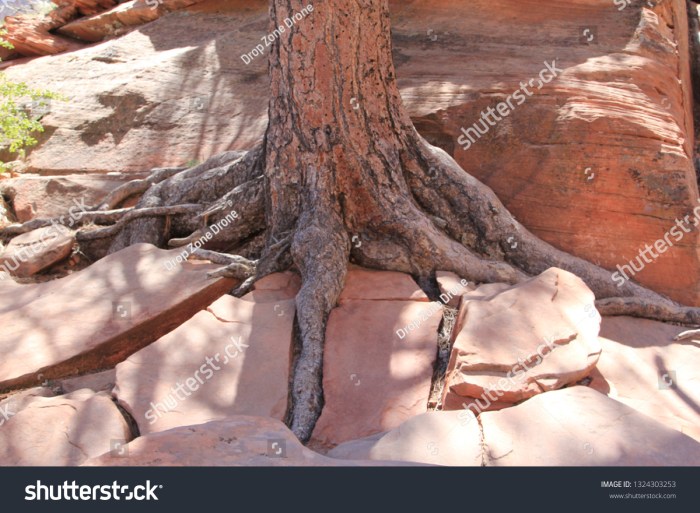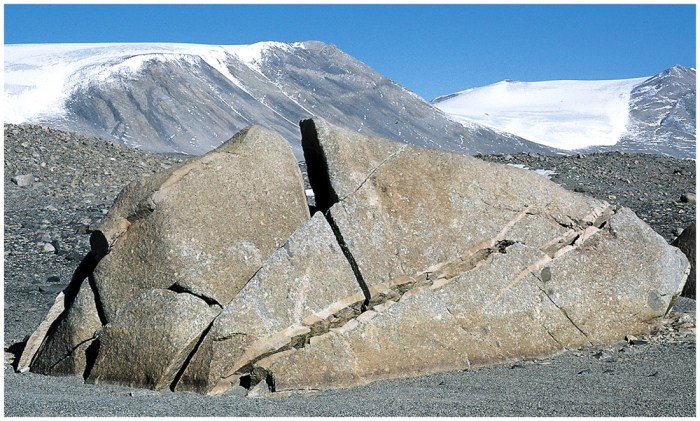Classify each process as weathering or erosion: a fundamental distinction in Earth’s dynamic processes. Weathering, the breakdown of rocks at their source, and erosion, the transportation of weathered materials, shape landscapes, influence ecosystems, and impact human societies. Understanding their interplay is crucial for comprehending Earth’s ever-changing surface.
This guide provides a comprehensive overview of weathering and erosion, exploring their types, factors affecting their rates, and their wide-ranging impacts. Through engaging explanations and real-world examples, it equips readers with a thorough understanding of these fundamental geological processes.
Define Weathering and Erosion

Weathering refers to the process of breaking down rocks and minerals into smaller pieces, while erosion involves the transportation of these broken-down materials by agents such as water, wind, or ice. The main difference between weathering and erosion lies in the movement of the materials.
Weathering occurs in place, while erosion involves the movement of weathered materials away from their original location.Examples of weathering include the physical breakdown of rocks by temperature changes, chemical reactions with water or acids, and the action of living organisms.
Erosion, on the other hand, is exemplified by the transportation of sediments by rivers, the deflation of sand by wind, and the movement of rocks by glaciers.
Types of Weathering: Classify Each Process As Weathering Or Erosion

There are three main types of weathering: physical, chemical, and biological. Physical weatheringinvolves the physical breakdown of rocks into smaller pieces without altering their chemical composition. Examples include:
- Exfoliation:The peeling off of thin layers of rock due to temperature changes.
- Frost wedging:The expansion of water freezing in cracks in rocks, causing them to split.
- Salt weathering:The crystallization of salts in pores and cracks, leading to the expansion and breakdown of rocks.
Chemical weatheringinvolves the alteration of the chemical composition of rocks through reactions with water, acids, or oxygen. Examples include:
- Carbonation:The reaction of carbon dioxide with water to form carbonic acid, which dissolves minerals in rocks.
- Oxidation:The reaction of oxygen with minerals in rocks, forming oxides.
- Hydrolysis:The reaction of water with minerals in rocks, breaking down their chemical bonds.
Biological weatheringinvolves the breakdown of rocks by living organisms, such as plants, animals, and microorganisms. Examples include:
- Root wedging:The growth of plant roots in cracks in rocks, causing them to split.
- Animal burrowing:The digging of animals in the ground, exposing rocks to weathering agents.
- Microbial weathering:The release of acids by microorganisms that dissolve minerals in rocks.
Types of Erosion
There are three main types of erosion: water erosion, wind erosion, and glacial erosion. Water erosioninvolves the transportation of sediments by water. Examples include:
- Sheet erosion:The removal of a thin layer of soil by overland flow of water.
- Rill erosion:The formation of small channels in soil by concentrated water flow.
- Gully erosion:The formation of deep channels in soil by concentrated water flow.
- Stream erosion:The erosion of riverbeds and banks by the flow of water.
Wind erosioninvolves the transportation of sediments by wind. Examples include:
- Deflation:The removal of loose soil particles by wind.
- Abrasion:The wearing away of rocks and minerals by wind-blown particles.
- Loess deposition:The accumulation of wind-blown silt.
Glacial erosioninvolves the transportation of sediments by glaciers. Examples include:
- Plucking:The removal of rock fragments from the bedrock by the freezing and thawing of water in cracks.
- Abrasion:The wearing away of rocks and minerals by the movement of glaciers.
- Polishing:The smoothing of rocks by the movement of glaciers.
Factors Affecting Weathering and Erosion

The rate of weathering and erosion is influenced by several factors, including: Climate:Temperature, precipitation, and humidity play a significant role in weathering and erosion. High temperatures and precipitation accelerate weathering, while low temperatures and precipitation slow it down. Rock type:The composition and structure of rocks influence their susceptibility to weathering and erosion.
Soft rocks, such as sandstone, are more easily weathered and eroded than hard rocks, such as granite. Topography:The slope and elevation of an area can affect the rate of weathering and erosion. Steep slopes and high elevations are more prone to erosion, while gentle slopes and low elevations are less susceptible.
Vegetation:Plants and vegetation can help protect rocks and soil from weathering and erosion by intercepting rainfall, reducing runoff, and holding soil in place.
Impacts of Weathering and Erosion
Weathering and erosion have both positive and negative impacts on the environment and human activities. Positive impacts:
- Weathering and erosion help to create new soils and landscapes.
- They expose minerals and nutrients that can be used by plants and animals.
- They can create scenic landscapes, such as canyons and waterfalls.
Negative impacts:
- Erosion can lead to the loss of topsoil, which can reduce agricultural productivity.
- Erosion can cause sedimentation in rivers and lakes, which can harm aquatic ecosystems.
- Weathering and erosion can damage buildings and infrastructure.
Question & Answer Hub
What is the primary difference between weathering and erosion?
Weathering breaks down rocks at their source, while erosion transports weathered materials away from their source.
Name three types of weathering.
Physical weathering, chemical weathering, and biological weathering.
What are the major types of erosion?
Water erosion, wind erosion, and glacial erosion.